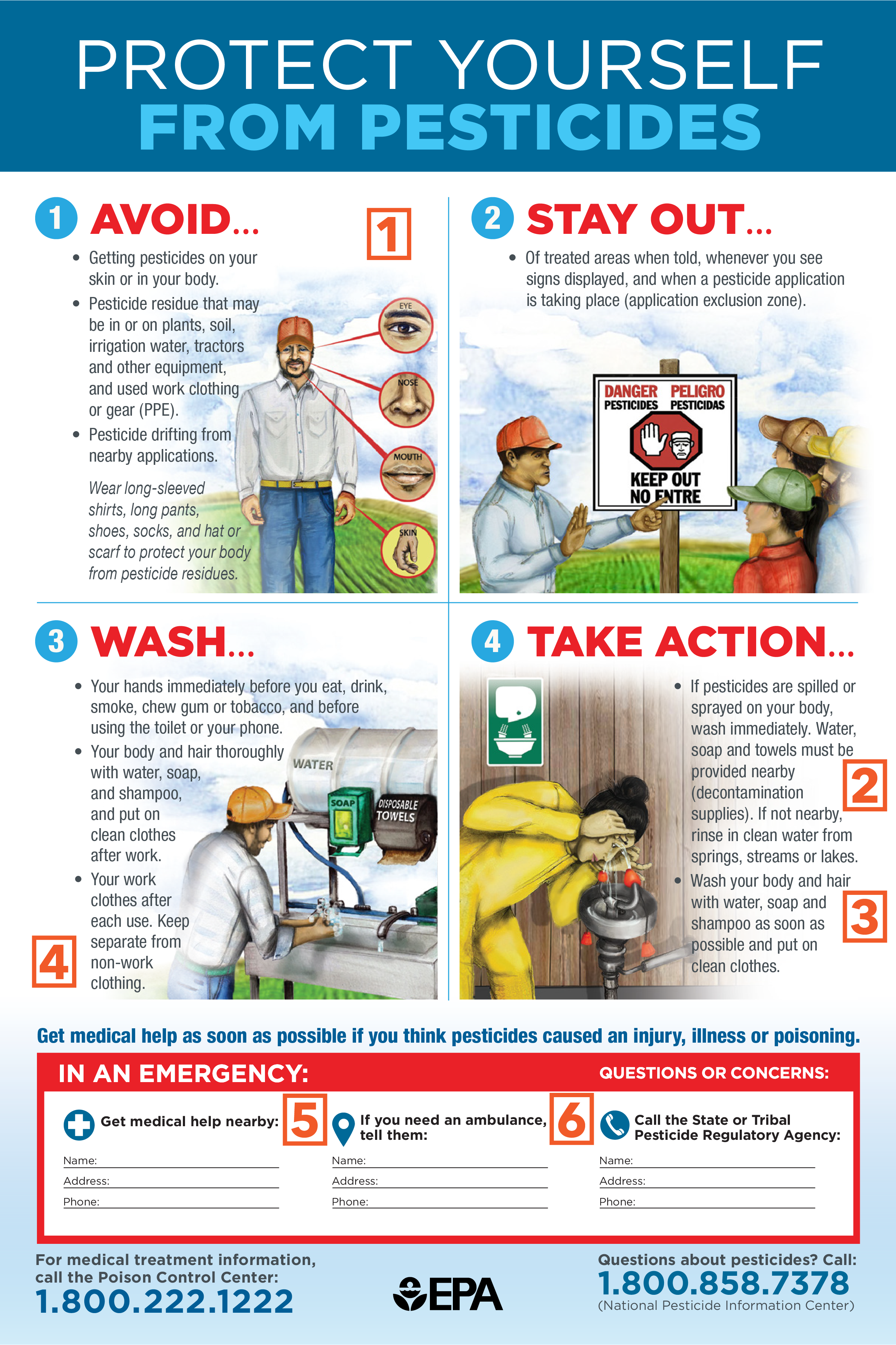
Be Part of the Ultimate Safety & Compliance Community
Trending news, knowledge-building content, and more – all personalized to you!
The Worker Protection Standard (WPS), found the Federal Insecticide, Fungicide, and Rodenticide Act (FIFRA), requires agricultural employers and commercial pesticide handler employers to provide specific information and protections to workers, handlers, and other persons. The WPS applies when WPS-labeled pesticide products are used on agricultural establishments in the production of agricultural plants. The WPS aims to reduce the risks of illness or injury to workers and handlers resulting from occupational exposures to pesticides used in the production of agricultural plants on agricultural establishments. To ensure safety, WPS requires safety information that includes basic safety concepts on a poster or otherwise displayed.
In this How-to Guide an example of a compliant poster is explained. The example poster is provided by EPA and includes all the required pesticide safety information that must be displayed to keep workers safe.

The Worker Protection Standard (WPS), found the Federal Insecticide, Fungicide, and Rodenticide Act (FIFRA), requires agricultural employers and commercial pesticide handler employers to provide specific information and protections to workers, handlers, and other persons. The WPS applies when WPS-labeled pesticide products are used on agricultural establishments in the production of agricultural plants. The WPS aims to reduce the risks of illness or injury to workers and handlers resulting from occupational exposures to pesticides used in the production of agricultural plants on agricultural establishments. To ensure safety, WPS requires safety information that includes basic safety concepts on a poster or otherwise displayed.
In this How-to Guide an example of a compliant poster is explained. The example poster is provided by EPA and includes all the required pesticide safety information that must be displayed to keep workers safe.
